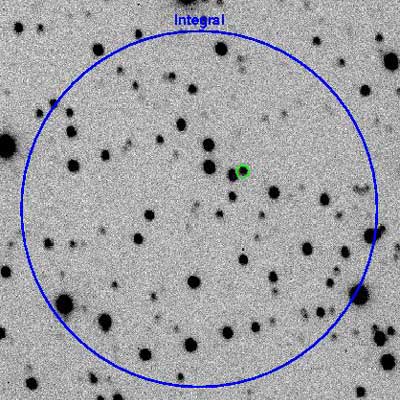Avi Blizovsky

Direct link to this page: https://www.hayadan.org.il/pulsar260205.html
Astronomers at the University of Southampton have discovered the fastest X-ray pulsar ever observed: it spins at 600 times per second. The object, IGR J00291+5934, was first observed as a bright X-ray object by the European Space Agency's Integral Space Telescope in December. Further analyzes revealed that it is part of a binary or double star system, drawing material from a companion star. The two stars orbit each other every two and a half hours, and the distance between them is similar to that between the Earth and the Moon.
Dr. Simon Shaw (Shaw) from the Department of Physics and Astronomy at the University of South Hampton and the UK representative at the Integral Scientific Data Center near Geneva (also belonged to the Observatory of the University of Geneva). There he headed a team that received and analyzed data from Integral. This is a pulsar that, until these photographs were taken, was unknown to science, until its discovery in December 2004.
A binary system is formed when two stars orbit each other. If one of these stars undergoes a supernova explosion it collapses and becomes a neutron star. Neutron stars are compact, weighing a little more than the Sun but filling a sphere about the size of a city on Earth. A handful of material from a neutron star would weigh as much as all the humans on Earth.
The huge gravitational field around the neutron star causes material to be torn away from the star surrounding the neutron star, material that spirals into the neutron star, in a process known as accretion or growth. The magnetic field of the neutron star causes the accelerated material to be lifted into individual hot spots on the surface of the neutron star, where X-rays and gamma rays are produced. A pulsar is observed when regular pulses are seen from these hot spots as the neutron star spins, just as periodic pulses of light are seen from a rotating beam emitted from the roof of a lighthouse.
Anyway, this particular lighthouse rotates about 600 times per second, which is equivalent to a rotation speed of 30 km per second (10 percent of the speed of light) - the highest speed of its kind observed so far. The cycle time of the system is also impressive. The two stars orbit each other in two and a half hours, but the distance between them is like that between the Earth and the Moon. On the pulsar IGR J00291+5934 the length of the day is 0.0016 seconds and the year lasts 147 minutes.
"This rate of rotation is extremely impressive" comments Dr. Shaw. "It gives us an opportunity to study the effect of such extreme forces caused by this spin on the exotic matter found in neutron stars, which does not exist on Earth. It is possible that there are other objects of this type waiting to be discovered, possibly even faster ones. If there are any, Integral will find them.”
Dr. Shaw is the lead researcher in an article about the object expected to be published in the journal Astronomy and Astrophysics.
To review the pre-publication version of the article
For the news in Universe Today
Yadan Astrophysics 2 - Stars in their lives and deaths
https://www.hayadan.org.il/BuildaGate4/general2/data_card.php?Cat=~~~93616411~~~97&SiteName=hayadan
